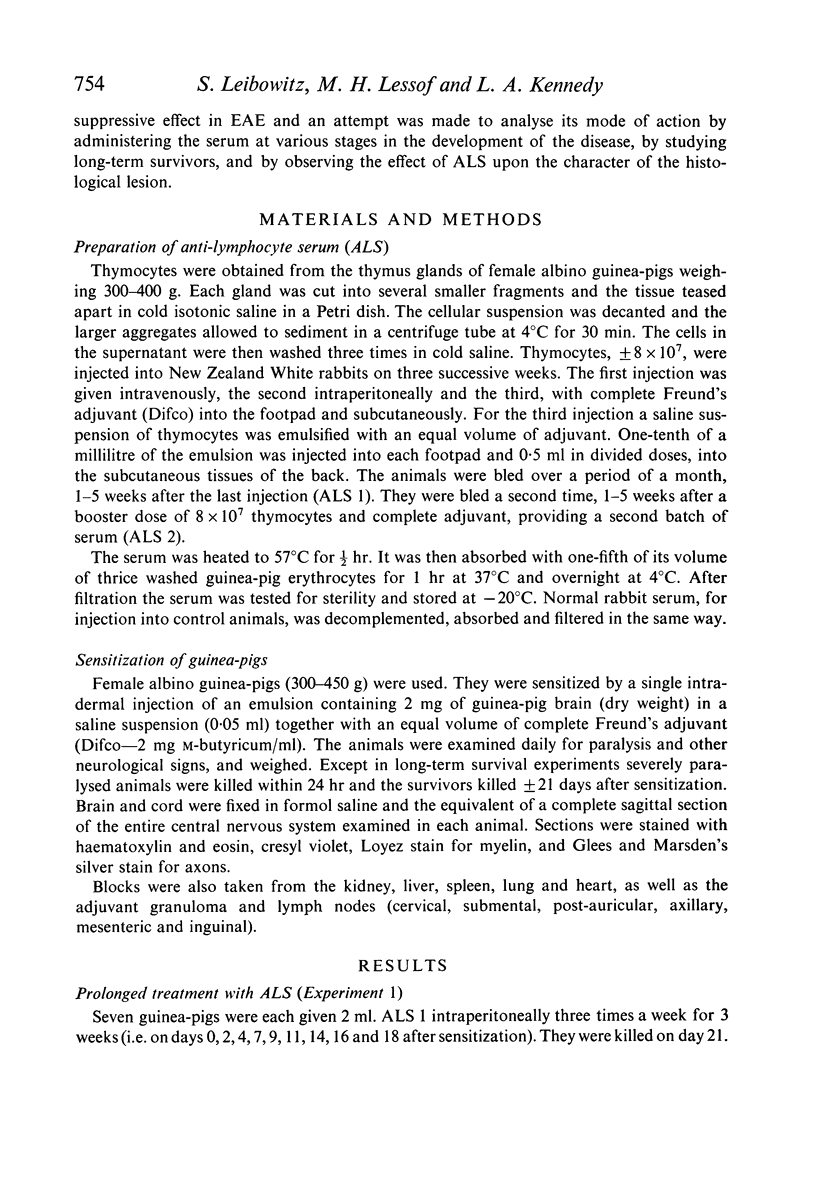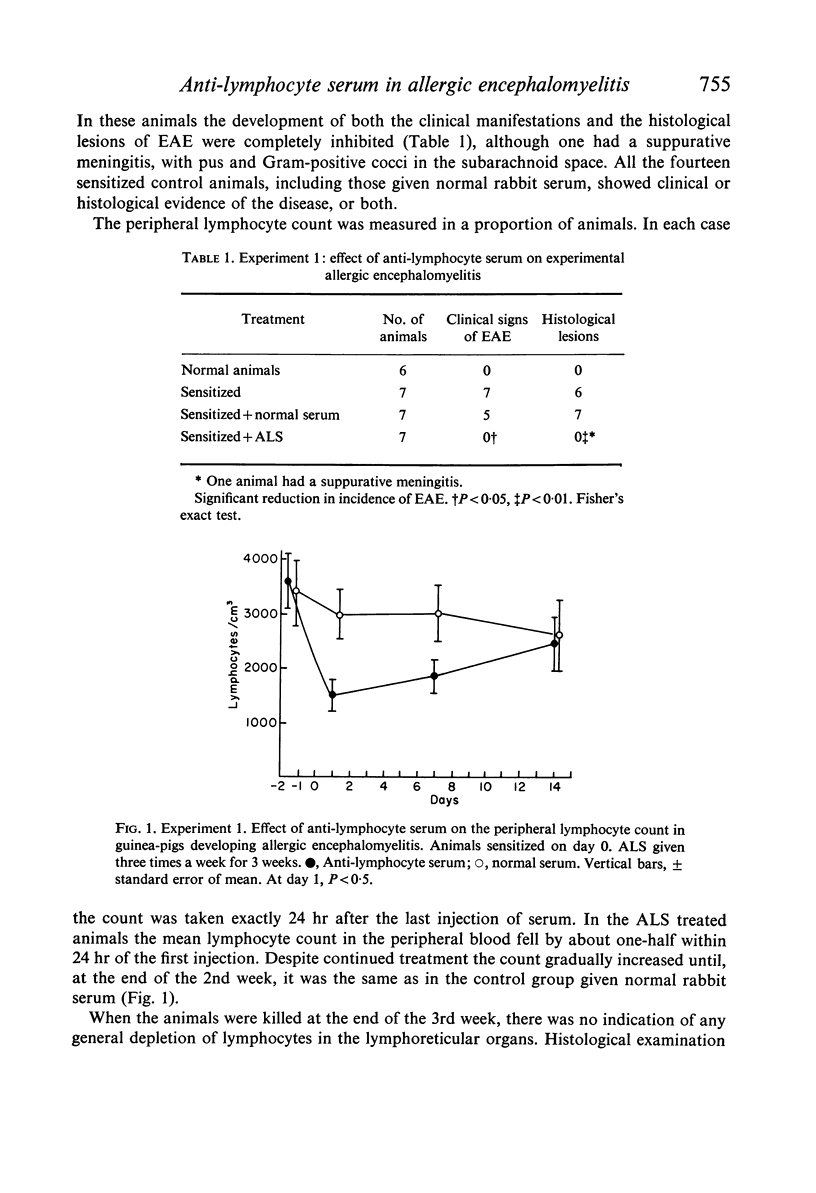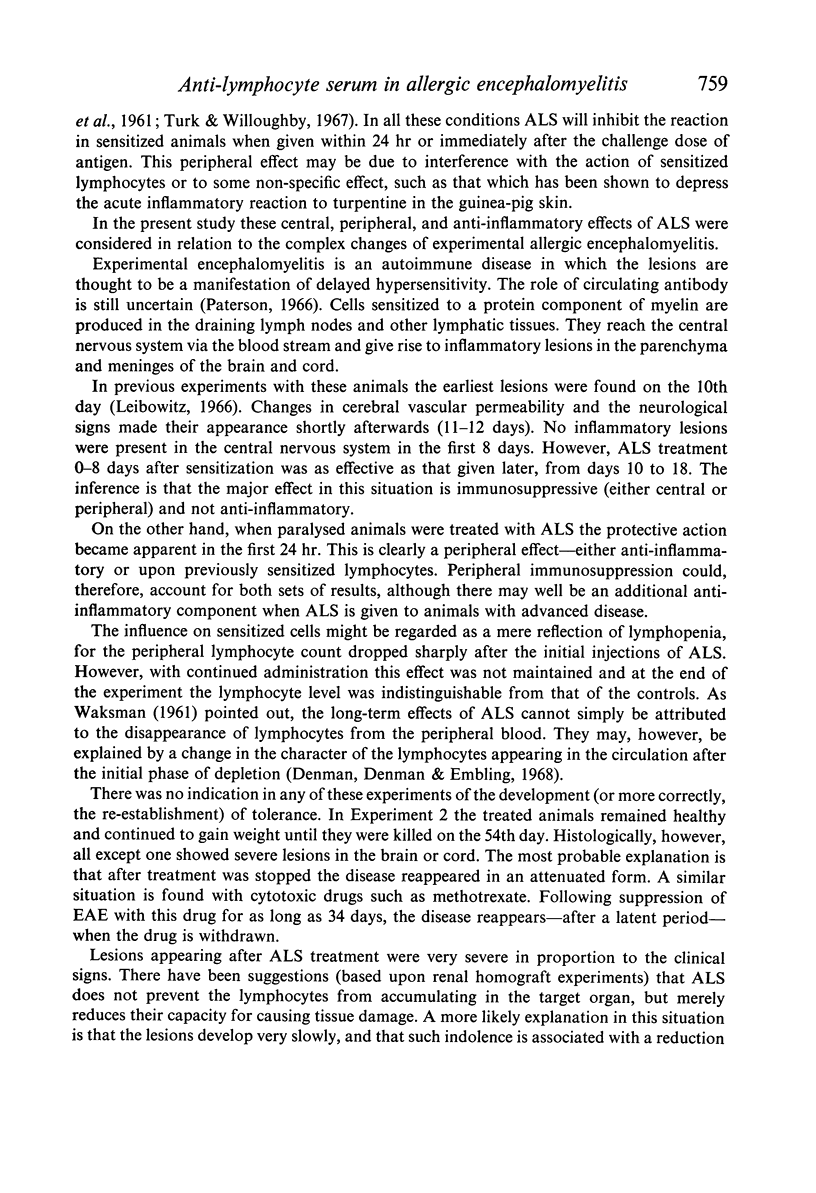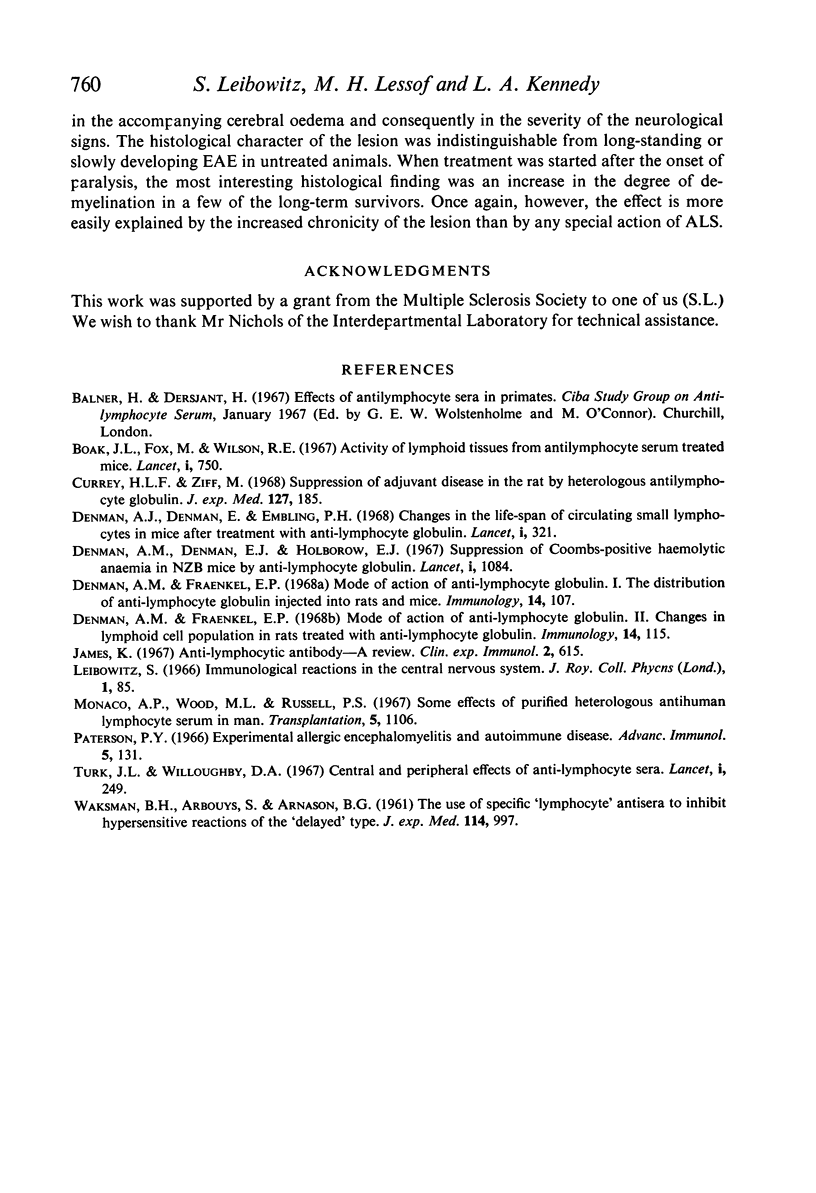Abstract
An anti-thymocyte serum completely suppressed the clinical and histological manifestations of experimental allergic encephalomyelitis (EAE) in the guinea-pig. Long-term suppression of EAE was obtained with a relatively short course of treatment (8 days) although tolerance did not develop and the disease recurred in an attenuated form. Early treatment (0–8 days) was as effective as that given later, at a time (10–18 days) when the inflammatory lesion normally develops in the brain and cord. This suggests that the major effect is immunosuppressive rather than anti-inflammatory. A definite protective effect was also demonstrated within 24 hr of giving the serum to paralysed animals, implying a `peripheral' action upon sensitized lymphocytes or some additional anti-inflammatory component. The brain lesions seen in some long term survivors showed more advanced demyelination than is commonly seen in EAE, probably due to the chronicity of the lesion.
Full text
PDF







Selected References
These references are in PubMed. This may not be the complete list of references from this article.
- Boak J. L., Fox M., Wilson R. E. Activity of lymphoid tissues from antilymphocyte-serum-treated mice. Lancet. 1967 Apr 8;1(7493):750–752. doi: 10.1016/s0140-6736(67)91366-9. [DOI] [PubMed] [Google Scholar]
- Currey H. L., Ziff M. Suppression of adjuvant disease in the rat by heterologous antilymphocyte globulin. J Exp Med. 1968 Jan 1;127(1):185–203. doi: 10.1084/jem.127.1.185. [DOI] [PMC free article] [PubMed] [Google Scholar]
- Denman A. M., Denman E. J., Embling P. H. Changes in the life-span of circulating small lymphocytes in mice after treatment with anti-lymphocyte globulin. Lancet. 1968 Feb 17;1(7538):321–325. doi: 10.1016/s0140-6736(68)90791-5. [DOI] [PubMed] [Google Scholar]
- Denman A. M., Denman E. J., Holborow E. J. Suppression of Coombs-positive haemolytic anaemia in NZB mice by antilymphocyte globulin. Lancet. 1967 May 20;1(7499):1084–1086. doi: 10.1016/s0140-6736(67)92653-0. [DOI] [PubMed] [Google Scholar]
- Denman A. M., Frenkel E. P. Mode of action of anti-lymphocyte globulin. I. The distribution of rabbit anti-lymphocyte globulin injected into rats and mice. Immunology. 1968 Jan;14(1):107–113. [PMC free article] [PubMed] [Google Scholar]
- Denman A. M., Frenkel E. P. Mode of action of anti-lymphocyte globulin. II. Changes in the lymphoid cell population in rats treated with anti-lymphocyte globulin. Immunology. 1968 Jan;14(1):115–126. [PMC free article] [PubMed] [Google Scholar]
- James K. Anti-lymphocytic antibody--a review. Clin Exp Immunol. 1967 Nov;2(6):615–631. [PMC free article] [PubMed] [Google Scholar]
- Monaco A. P., Wood M. L., Russell P. S. Some effects of purified heterologous antihuman lymphocyte serum in man. Transplantation. 1967 Jul;5(4 Suppl):1106–1114. doi: 10.1097/00007890-196707001-00046. [DOI] [PubMed] [Google Scholar]
- Paterson P. Y. Experimental allergic encephalomyelitis and autoimmune disease. Adv Immunol. 1966;5:131–208. doi: 10.1016/s0065-2776(08)60273-4. [DOI] [PubMed] [Google Scholar]
- Turk J. L., Willoughby D. A. Central and peripheral effects of anti-lymphocyte sera. Lancet. 1967 Feb 4;1(7484):249–251. doi: 10.1016/s0140-6736(67)91307-4. [DOI] [PubMed] [Google Scholar]
- WAKSMAN B. H., ARBOUYS S., ARNASON B. G. The use of specific "lymphocyte" antisera to inhibit hypersensitive reactions of the "delayed" type. J Exp Med. 1961 Dec 1;114:997–1022. doi: 10.1084/jem.114.6.997. [DOI] [PMC free article] [PubMed] [Google Scholar]


